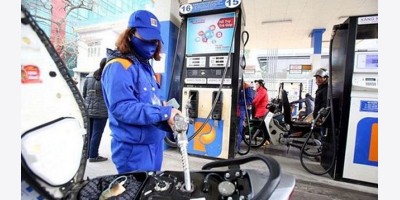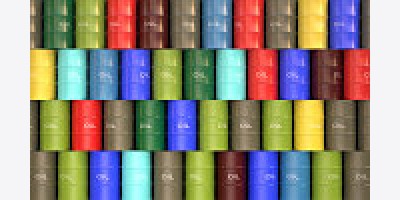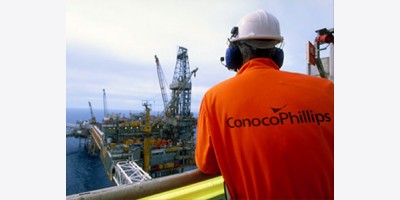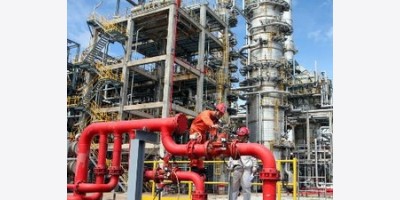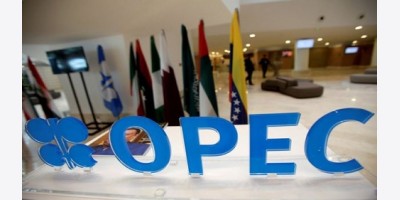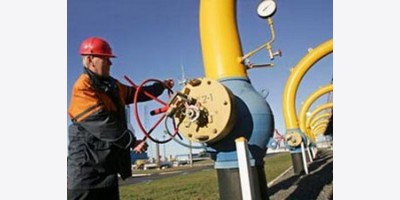By Bloomberg
The LNG vessel Dukhan sits moored at the Enagas SA gas storage facility at the port of Barcelona.
Spain overtook Norway last month to become the region’s biggest exporter of liquefied natural gas. The southern European nation has never produced any of the fuel.
The twist is a consequence of the crisis that left more than a quarter of Spain’s workers unemployed as the economy weakened for nine straight quarters. Utilities that contracted to buy
LNG before the slump are now contending with a sixth consecutive year of diminishing domestic demand, spurring them to re-export cargoes.
The trade is being underpinned by prices in Asia and South America that are about 30 percent higher than in Europe. Japan is importing more after shutting down its nuclear power plants following the Fukushima disaster in 2011. South American nations are accelerating purchases after a drought in Brazil limited the supply of hydroelectric power and cold snaps in the U.S. curbed pipeline flows to Mexico.
“It doesn’t make much sense to bring a cargo into the terminal, unload it and then put it back on the ship and send it somewhere else,” Andy Flower, a former BP Plc executive who’s now an independent LNG consultant based in Caterham, England, said yesterday by phone. “Reloads are a crazy way for business to behave but it’s the reality of the LNG business.”
LNG for delivery to northeast Asia cost on average $16.65 a million British thermal units over the past year and reached a record $19.70 in February, according to assessments by World Gas Intelligence for spot cargoes for delivery in six to eight weeks. That compares with $12.81 in southwest Europe.
Spanish buyers including Iberdrola SA and Endesa SA are obliged to buy LNG volumes under their long-term contracts, most of which have so-called destination clauses, meaning the cargoes can’t be diverted at sea.
Spain dispatched seven loaded LNG tankers from its import terminals in March, according to Enagas SA, the Madrid-based network operator. That compares with five from Norway’s Hammerfest, Europe’s only plant that turns natural gas into a liquid by freezing it to minus 162 degrees Centigrade (minus 260 Fahrenheit), ship-tracking data compiled by Bloomberg show.
“Reload markets were very active in February and the first half of March,” Trevor Sikorski, the head of natural gas, coal and carbon at Energy Aspects Ltd. in London, said April 4. “Prices have come down but there is still incentive to reload.”
‘Big Incentive’
The southern European nation will re-export a record 10 cargoes in April and seven in May, according to the Enagas data. That implies that exports in the first five months of the year will be twice the level a year earlier. Norway exported six cargoes a month on average over the past year, according to ship-tracking data.
Norway’s shipments fell 7.8 percent to 3.05 million metric tons in 2014 while Spain’s re-exports rose 68 percent to 2.13 million, or 51 percent of global reloads, according to the International Group of LNG Importers, a Paris-based lobby group also known as GIIGNL. Spain’s imports declined 37 percent to 9.13 million tons.
LNG prices in Asia may drop to as low as $12 per million Btu by the end of 2015 as new export projects boost supply from Australia to the U.S., according to Sikorski. That may make re-exports unprofitable, Howard Rogers, the director of natural gas research at the Oxford Institute for Energy Studies, said by phone on March 7.
Shipments from the European Union also may decline as the 28-nation bloc seeks to cut dependence on pipeline gas from Russia, the source of 30 percent of its supply. Half of that gas transits through Ukraine and tensions are mounting after Russia annexed Crimea last month.
Spain “has to reload and send LNG to the best spot market,” Howard Rogers, the director of natural gas research at the Oxford Institute for Energy Studies, said by phone on March 7. “But it could be that in a couple years’ time that changes from being sort of a profit-making opportunity to one of break-even or even losing money.”
Global demand will exceed supply until at least 2020, BG Group Plc said last month. The tight market signals that LNG reloads will continue, Andrew Walker, vice president for global LNG at BG Group Plc, said in London on March 18.
“Although cross-basin LNG flows and liquidity are rising, we still expect material price differentials to endure,” JPMorgan Cazenove analysts including Fred Lucas said in a research note today. “We expect Asia Pacific to remain the largest market and to dominate the regional pricing hierarchy, creating price tensions in the Atlantic Basin for European and Latam buyers.”
Biggest Customer
Norway’s Hammerfest LNG is the world’s most northerly production facility and has output of as much as 4.3 million tons a year. The plant will carry out maintenance from May 2 to June 9, Oerjan Heradstveit, a spokesman for operator Statoil ASA, said in February.
Iberdrola is the plant’s biggest customer after Statoil. The utility agreed to buy 1.2 million tons a year from 2006 to 2026. Spain received 0.9 million tons from Norway last year, according to GIIGNL. It bought more from Qatar, Algeria, Nigeria, Trinidad & Tobago and Peru.
Re-exports boosted LNG volumes in the spot market by 9.8 percent to 65 million tons last year, or 27 percent of global trading in the fuel, according to GIIGNL. Latin American nations are the most reliant on reloads, with Argentina getting 27 percent of its LNG from that source, Brazil 21 percent and Mexico 6 percent.
Spanish gas use slid 8 percent last year, according to Enagas data. The nation’s demand for the fuel probably won’t recover any time soon, according to Stephen Rogers, a partner at consultancy Arthur D. Little in London.
“It is likely to be many months, or possibly years, before Spain needs all of the gas that it has contracted for use in powering its own economy,” Rogers said by phone today.
Gas demand in Spain is also weakening because of a surge in wind and solar power. Renewable energy’s share of the nation’s power supply jumped to 42 percent last year, from 28 percent in 2009, grid operator REE said in a December report.
“It’s a global market and cargoes will follow the money,” Abel Enriquez, European regulatory affairs manager at Enagas, said in an interview in Berlin on March 25. “The reloading will stay high in Spain also this year.”
To contact the reporters on this story: Anna Shiryaevskaya in London at ashiryaevska@bloomberg.net; Julia Mengewein in Frankfurt at jmengewein@bloomberg.net
To contact the editors responsible for this story: Lars Paulsson at lpaulsson@bloomberg.net Rob Verdonck




